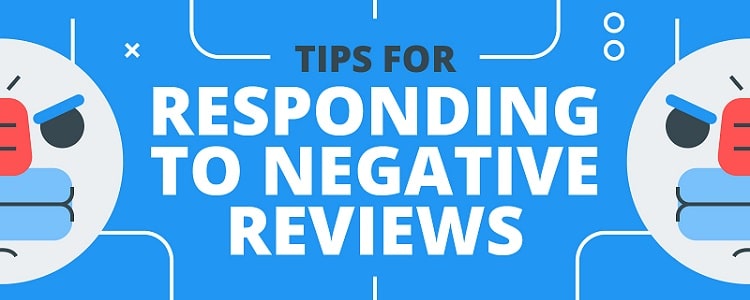Respond To Your Negative (and Positive) Reviews – Inforgraphic

TechsPlace | The reputation of your business is becoming increasingly more important as more customers discover companies online. Transparency is a great tool when it works in your favor, but if you have received a sleuth of negative reviews, you must take action to course-correct before it’s too late.
Review sites like Yelp, Google My Business, Houzz, and more, allow customers to provide their honest opinions of the businesses they patronize. Whether it’s the most enjoyable experience they’ve ever had or the worst, they can and most likely will share it with the world. But how does an online review have a tangible impact on the business?
84% of people report trusting reviews from strangers as much as recommendations from friends. This means that people will actually believe what they read in the reviews, which is why it is imperative you provide additional context.
How to Respond to Negative Reviews
Negative reviews were likely written with the experience fresh in the customer’s memory and emotions running high, with anger and fear seething between every word. The customer’s vitreal reaction could raise your blood pressure, building up in your head how to ‘get back’ at them. We are here to tell you this is not the right course of action.
Instead, you should respond cordially and apologetically. Which brings us to our first tip for responding to negative reviews: Acknowledge the problem and apologize.
- Acknowledge + Apologize
Even if you don’t feel at fault for the situation, it’s best to immediately de-escalate the situation and remove the customer’s fear of retaliation. Many people feel as if they have been wronged when an experience does not go in their favor, and this fear drives them to act defensively.
If you acknowledge there was/is a problem and sincerely apologize, this fear is immediately disarmed.
An apology is great, but what’s even better is an explanation of what steps are going to be taken to ensure this problem won’t happen again in the future. Which is the subject of our next tip?
- Outline Action Plan
Many people review business to warn people before they have a similar negative experience. This is why it’s important to discuss what is being done to prevent this from ever happening again.
For example, if the customer writes a negative review about a lack of communication throughout the estimation process, you can mention that you have purchased a tool to streamline this process, or plan to hire an assistant to handle administrative work. As long as you are making an effort to change the situation framing the complaint.
You could also highlight any recent changes that could be hindering the short term but will likely be improvements in the near future.
- Don’t Take The Defensive
As the business owner, operator, or manager, a negative review can feel like an attack on your personality. After all, most if not all decisions are made by you, which quite literally impacts the business operations.
If you get defensive, however, your customers fear of retaliation has come true and future customers will get a preview for what to expect when things don’t go to plan. How you handle yourself under pressure is one thing a defensive response will immediately bring to light.
If the discussion is going to get heated, it’s better to take the conversation offline and manage through other channels, the subject of our next point.
- Provide Customer Service Contact Information
After acknowledging the problem, apologizing for the situation, and not getting defensive, you should include a support phone number, email address, or another form of contact info. This will allow you to discuss freely without the public forum.
This recommendation is not intended to be a loophole for you to berate customers who provide negative reviews and badger them to update it. You should still follow the previous tips and remain civil on all lines of communication.
- Update Resolution Status
Although many people read reviews, it’s unlikely they read every word. In order to make your customer service efforts easily recognizable and scannable, you should include the status towards a resolution in the reply to the negative reviews.
If a customer reports a negative experience and you plan to make amends, you can include a mention of “attempting resolution,” “pending resolution,” etc.
Responding to Positive Reviews
You should not let your positive reviewers go unnoticed.
No matter how brief, any response is better than no response. Although a “thank you” will do fine, you could also take this opportunity to highlight any unique selling propositions your business has that the customer may not have known about.
For example, you could reply: “Thanks a lot for taking the time to write us a glowing review. In addition to X, did you know we also offer Y?”
This not only helps your previous customer learn more about your business, but prospective customers could see your reply as well.
Your Reviews, Your Response
As you can see, responding to both negative and positive reviews are important for your overall digital reputation. You are free to take this information and act on it, or not, the choice is yours.
If you want some templates for responding to negative reviews, refer to the infographic below from Housecall Pro:

This article is contributed by guest author on techsplace.com.





